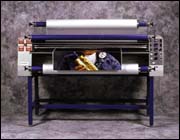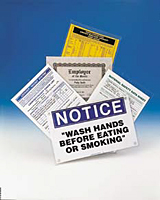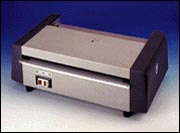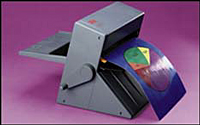What is Lamination?
Lamination is  the process by which two or more layers of material are glued together and
placed within a plastic covering as to protect them from damage and normal wear
and tear or deliberate damage.
This type of lamination, which is the one that
people most commonly refer to, should not be confused with the type associated
with electrical engineering, which is a technique used to reduce undesired
heating effects. The plastic covering sheath used to cover the materials is
known as a laminate. Credit cards, photo ID cards and formal documents are some
of the most commonly laminated items, but the process is used for protecting
virtually any paper document that might need protection, such as school reports
and diplomas.
the process by which two or more layers of material are glued together and
placed within a plastic covering as to protect them from damage and normal wear
and tear or deliberate damage.
This type of lamination, which is the one that
people most commonly refer to, should not be confused with the type associated
with electrical engineering, which is a technique used to reduce undesired
heating effects. The plastic covering sheath used to cover the materials is
known as a laminate. Credit cards, photo ID cards and formal documents are some
of the most commonly laminated items, but the process is used for protecting
virtually any paper document that might need protection, such as school reports
and diplomas.
Who Invented Lamination and Why?
An 19th century dentist named Dr. Morris M. Blum invented lamination, by accident, in 1938 when he used dental laminate (also known as a dental veneer) to laminate a picture of his wife.
Different Lamination Processes
Pouch Lamination
Pouch lamination is a method by which the material being
laminated is placed in a plastic
pouch and passed through a laminator. As the material is passed through the
pressurized lamination roller the inside of the pouch is coated with a heat-activated veneer that sticks to it and forms a seal on one side of the
material. The number of rollers a laminator has is correlated with the quality
of the lamination since the rollers are designed to distribute the heat evenly
while keeping the lamination film pressed shut. Moderately-sized pouch
laminators, such as desktop laminators,
are ideal for
heat-activated veneer that sticks to it and forms a seal on one side of the
material. The number of rollers a laminator has is correlated with the quality
of the lamination since the rollers are designed to distribute the heat evenly
while keeping the lamination film pressed shut. Moderately-sized pouch
laminators, such as desktop laminators,
are ideal for  use in the home or the office and for relatively small projects
while larger industry grade laminators with larger rollers are recommended for voluminous
jobs.
use in the home or the office and for relatively small projects
while larger industry grade laminators with larger rollers are recommended for voluminous
jobs.
Laminating pouches are rated by thickness and laminators are compatible only with pouches that are smaller or equal to the laminator’s maximum thickness capacity. The standard unit used for pouch thickness is a “mil,” (not to be confused with “millimeter”) which is one thousandth of an inch, and the common pouch thickness measurements are 3, 5, 7 and 10 mil. 3 mil pouches can protect against light spills and stains while 5 mil offers longer term protection and is resistant to bending. 7 and 10 mil pouches are the most durable and offer the best protection for items such as ID cards, luggage tags and pipe markers.
Heated and Cold Roll Lamination
Roll lamination is different from pouch lamination in several regards. For one, roll lamination is more commonly used for industrial-grade and high volume jobs, largely because the adhesion process is much faster. For example, roll laminators melt the glue before it is applied to the substrate (or underlying layer of material) which makes for a more expedient lamination process. The glue used in this process is also non-adhesive until heated, which makes it easier to handle unlike with pouch lamination which uses an already-adhesive layer. Since the glue is only pliable in heated form, once it cools and dries it is less likely to warp, which means solid and high quality laminations.
Cold roll lamination uses a “stick-on” method where the user peels off a glossy back
cover to expose the adhesive
and then sticks the lamination cover onto the desired item. Cold laminators are
highly compatible with wide format inkjet printers, which often use inks not
suitable for hot laminators. Cold lamination is not limited to the printing
industry and is also commonly used for coating stainless steel, such as metal signs, or sheet glass.
method where the user peels off a glossy back
cover to expose the adhesive
and then sticks the lamination cover onto the desired item. Cold laminators are
highly compatible with wide format inkjet printers, which often use inks not
suitable for hot laminators. Cold lamination is not limited to the printing
industry and is also commonly used for coating stainless steel, such as metal signs, or sheet glass.